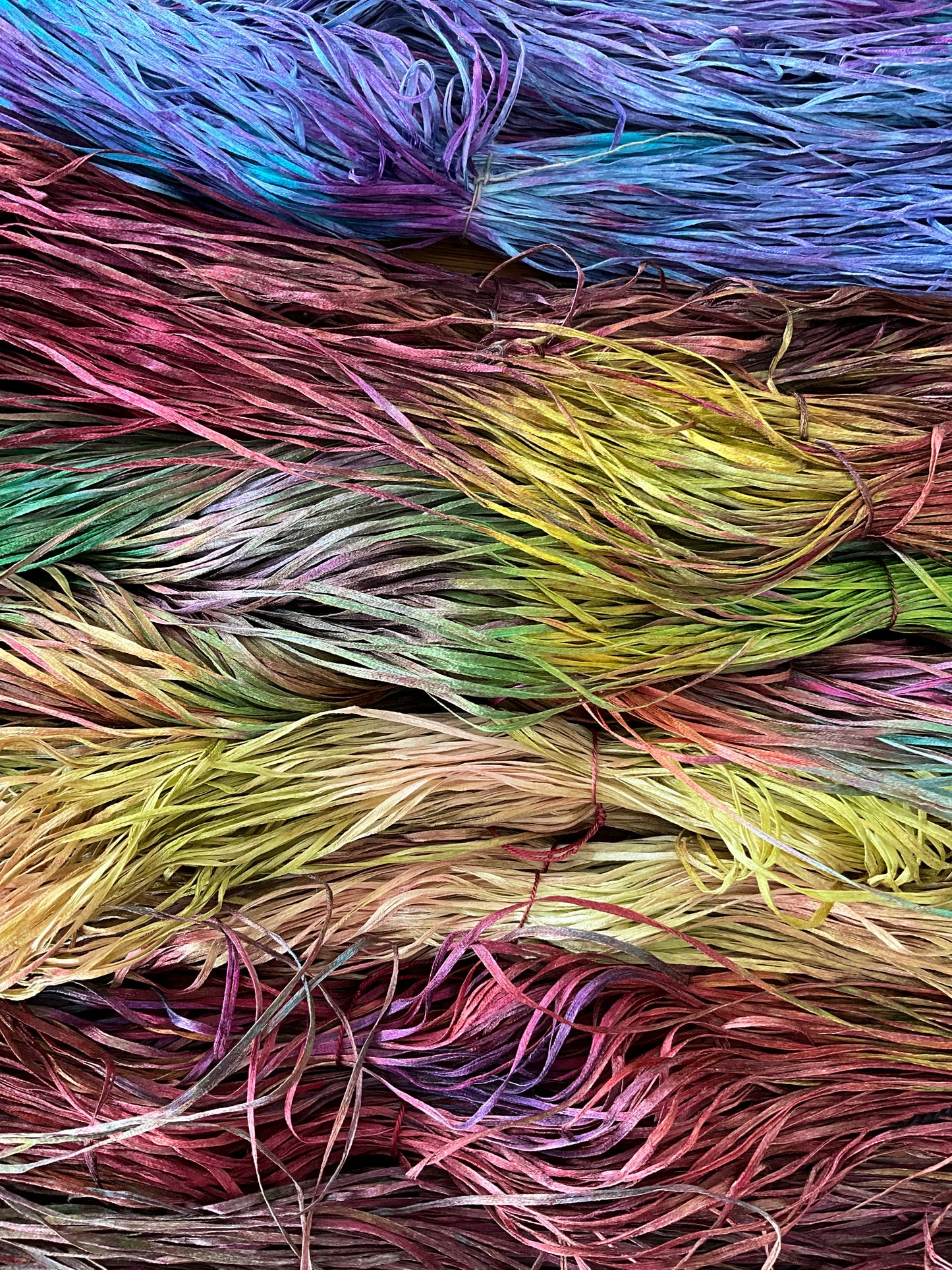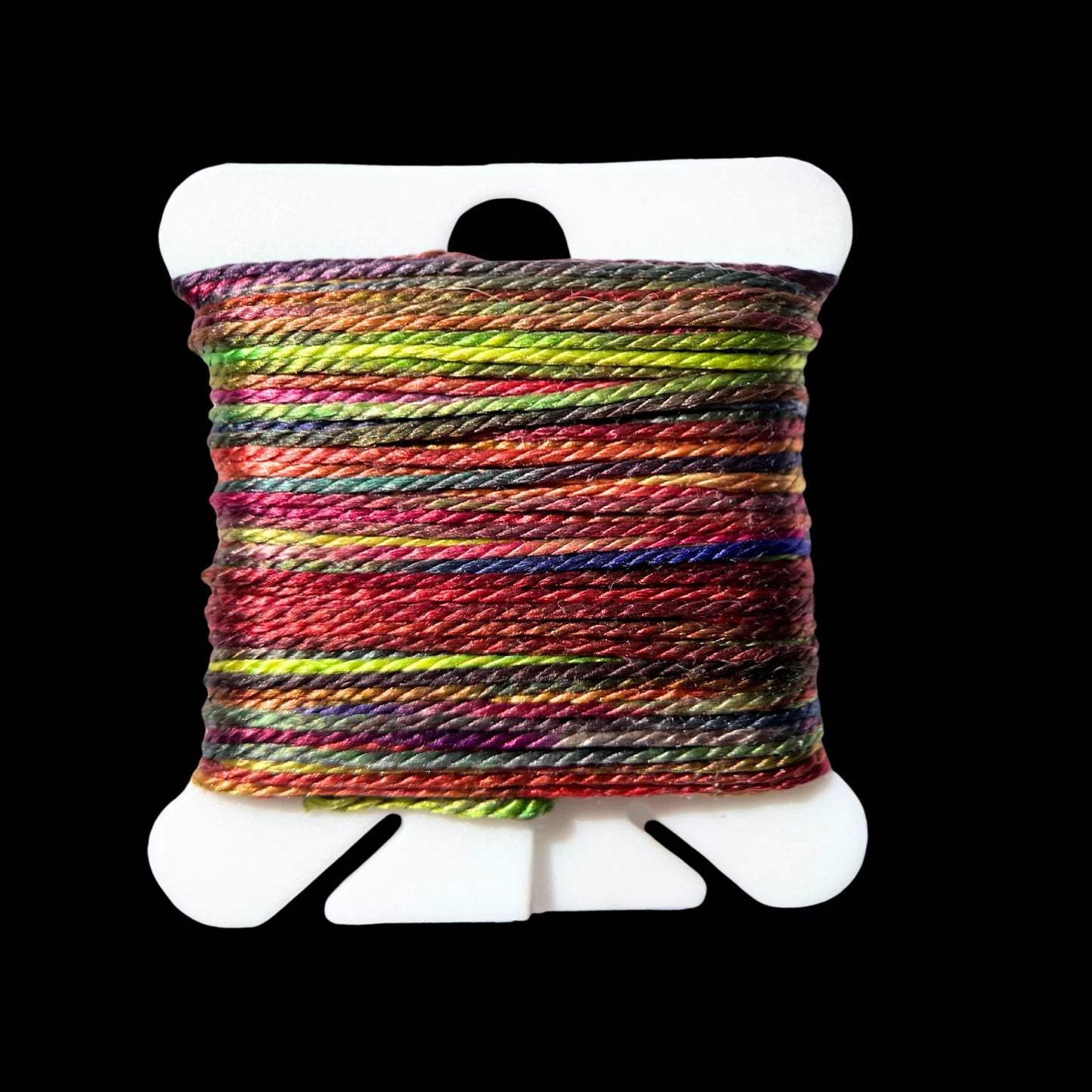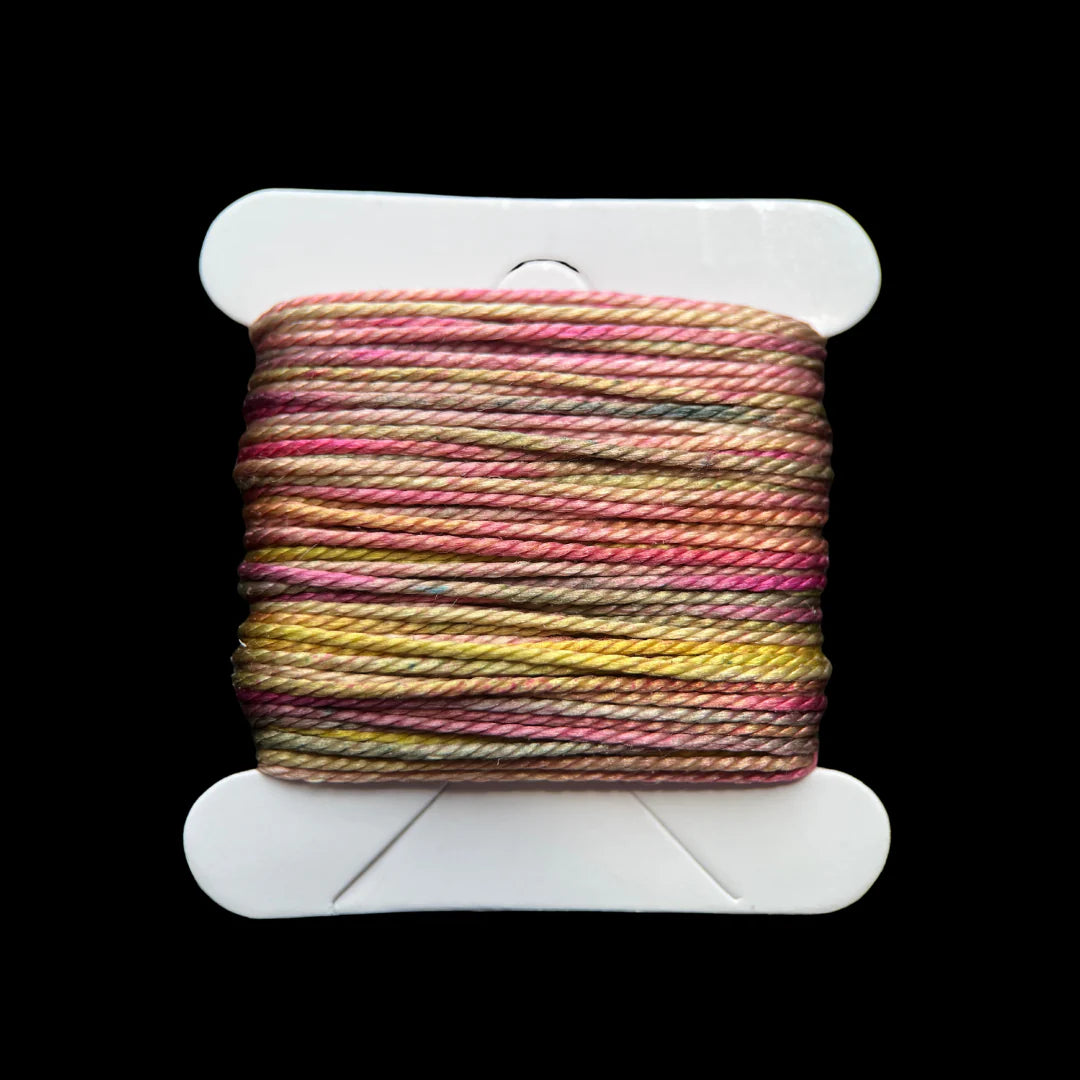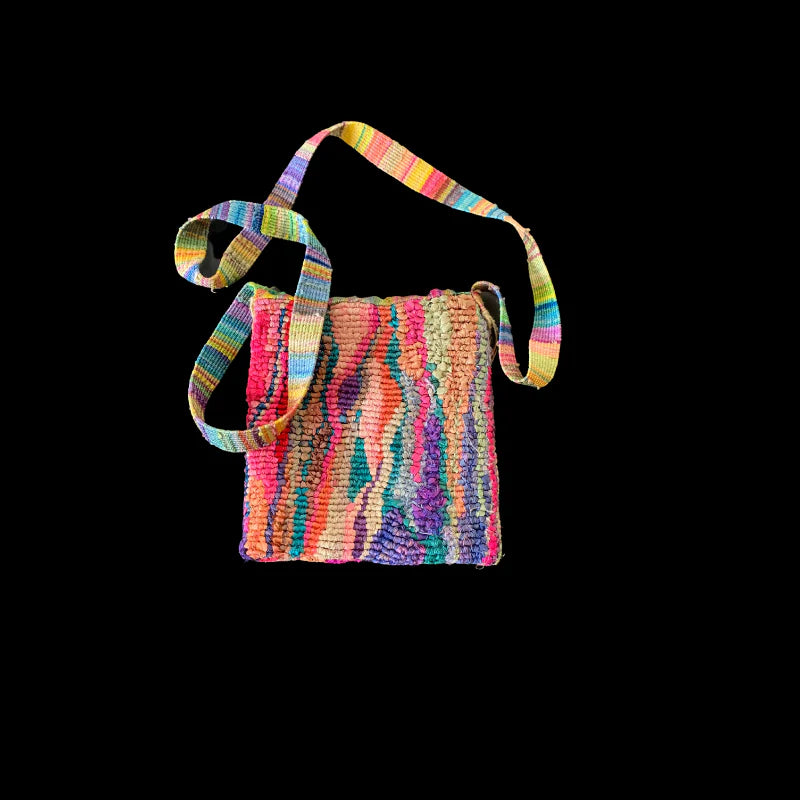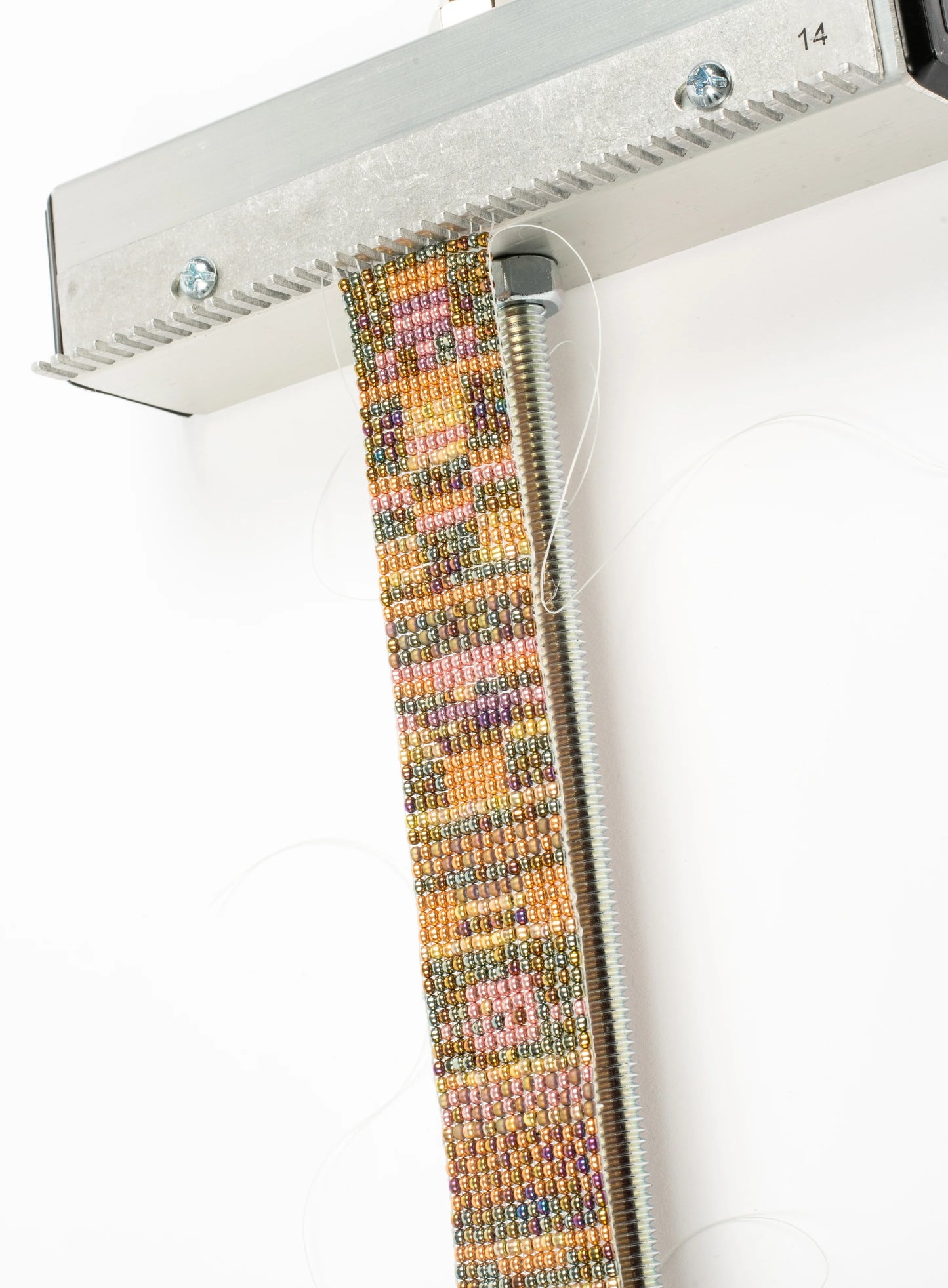When/how did you first get into tapestry weaving? What/who inspired you to begin weaving?
I was visiting a friend in Flagstaff, AZ a few years ago. While waiting for him to finish up work at his store, I walked across the street to the local library. Their Southwest section included a book on Navajo weaving. After reading the book for an hour I was hooked! I researched tapestry looms and bought a 32-inch Joni loom which has been great for rugs and wall hangings.

What made you decide to choose a Mirrix?
Quality and durability. The loom was a fairly substantial outlay for me at the time, but it’s turned out to be a great investment.
Were you self-taught or did you take classes? I’m self-taught. Step by step instructions in Nancy Harvey's Tapestry Weaving are thorough and easy to follow. I did take a workshop last summer.
 Area rug 28x48 inches after blocking, NZ wool warp and weft, colored yarns are scraps of wool and cotton left over from other projects.
Area rug 28x48 inches after blocking, NZ wool warp and weft, colored yarns are scraps of wool and cotton left over from other projects.
How would you describe your weaving aesthetic?
Color blending and designs that are not too busy. Last summer I did a lot of solar dyeing with plants and lichens. It was fun to create a simple design that showed off the different colors.

Do you weave on any other looms? What are they?
I have a Kromski rigid heddle loom, a 50-pack of tablet weaving cards, and a sprang loom. (I was able to successfully complete a sprang project on the Mirrix, but unfortunately forgot to take pictures).

What are your favorite yarns to weave with?
Hifa tapestry yarn is wonderful but expensive. Among non-tapestry yarns, I like Cascade 220 non-superwash wool. The plies divide easily, are durable, and pack down firmly at 8-10 wpi. The divided plies work well for color-blending. I’ve had good success with it for wall hangings and cushion covers. It’s probably not durable enough for rugs.


Wall hanging 24x25 inches, cotton seine twine, wool warp - my first attempt at a wall hanging on the Joni loom
Tell us a little bit about the Ravenstail twining and how you did that on your Mirrix Loom:
I used the Mirrix as a supportive frame, so it wasn’t technically done on the loom. You’ll notice in the picture I hung the warp on a dowel. I then placed the dowel in the concave area of the wooden clips and tied it to the loom. Hope that makes sense. Warp in traditional Ravenstail twining is free-hanging and tensioned, so warping the Mirrix in the normal manner would not work for this project.



